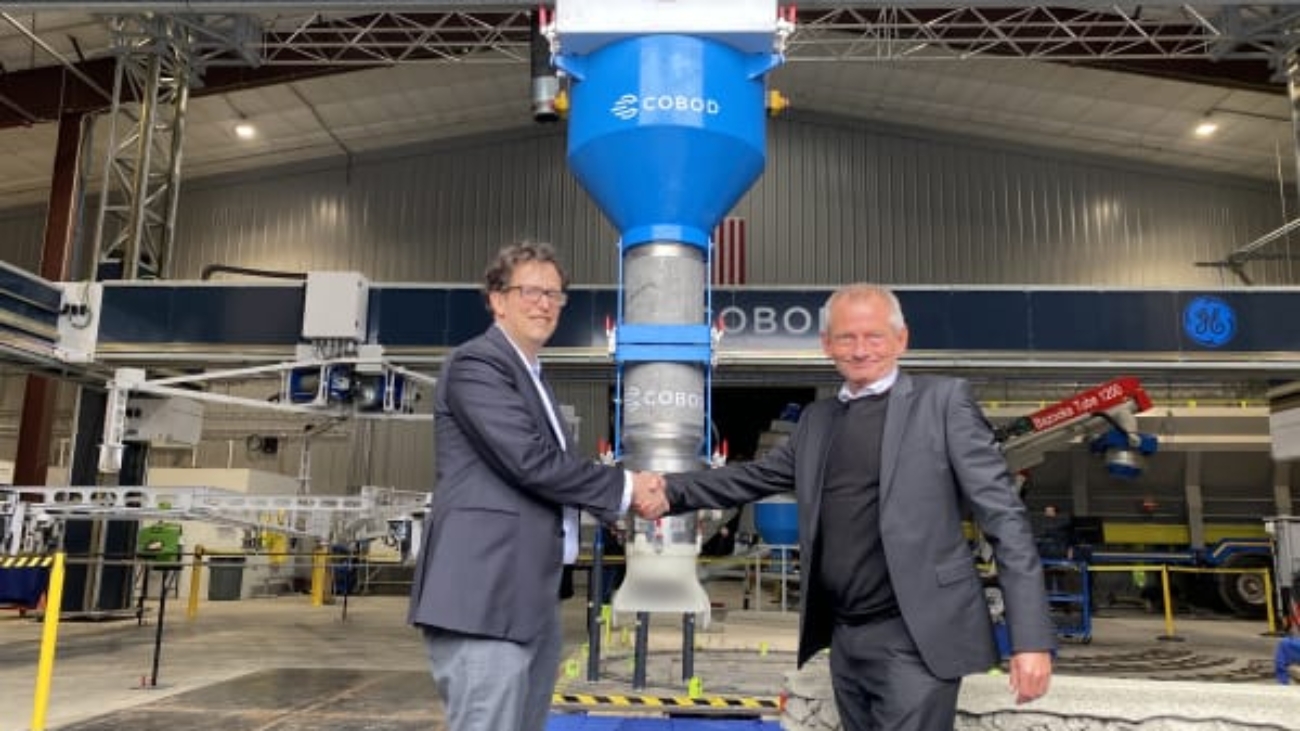GE Renewable Energy has made a minority investment in COBOD International, the company providing the 3D printer used at the Bergen research facility. Officials from both companies said the investment will build on an existing relationship with COBOD International, a leading player in 3D construction printing solutions, first undertaken in 2019.
GE has identified COBOD as the most reliable supplier of 3D construction printing technology for its wind turbine business. 3dpbm has also worked directly with 3D construction printing segment leader COBOD to explain the value proposition behind the company’s products and business model in an exclusive white paper (accessible from the link below) and 3dpbm Pulse Podcast interview with COBOD CEO Erik Lund-Nielsen.
COBOD is experiencing double-digit growth and the global market leader within 3D construction printing with more than 50 3D construction printers sold worldwide. Financial details on the investment were not disclosed.
GE Renewable Energy Advanced Manufacturing Technology Leader Matteo Bellucci, said, “This agreement, which will further strengthen our ability to use COBOD’s 3D printing technology and competences in the renewable energy space, is another sign of our commitment to help drive the energy transition by investing in technology that promotes a more sustainable, circular design strategy and helps to create local jobs. Since we started cooperating with COBOD, the company has continued to improve their technical competence and innovative solutions, reinforcing the benefits of solidifying the relationship between our companies.”
COBOD Founder & General Manager, Henrik Lund-Nielsen said, “I am extremely proud that such an iconic and world class company like GE would like to partner with COBOD and help us deliver on the automated construction solutions of the future. Since 2019, when we began cooperating with GE, we have already sharpened our R&D competence, engineering, and industrial skills significantly as a direct result of the cooperation, and we look very much forward to continuing to benefitting from the vast resources of GE. On behalf of the entire COBOD organization, I want to thank GE for their trust and support.”
Manufacturing on Demand

The two companies participated in a ribbon-cutting ceremony to inaugurate a new research and development facility in Bergen, New York last week that will conduct research on how to 3D print the concrete base of towers used in wind turbines. The research, the first of its kind research in the US, will enable GE Renewable Energy to develop new production methods to make wind turbine towers more efficient and sustainable.
During the event, Lund-Nielsen noted that the 3D concrete printer — the largest of its kind in the world – is the first 3D concrete printer in the world to have two X-axes – one for doing the printing of concrete and the other for doing the reinforcement – making it as much a multifunctional construction robot as a printer.
Wind-turbine towers is not the only non-residential low-rise application for COBOD’s technology. COBOD’s printers are also known for having printed both offices in Denmark and Austria, schools in Africa, two- and three-story houses and apartment buildings in Germany as well as concrete structures for the oil & gas industry, made in cooperation with EPC’s (Engineering, Procurement Contracting companies).
You might also like:
Is China really 3D printing the 590 ft Yangqu dam in Tibet?: The China Morning Post article does also reference a paper titled “3D printing of large filled construction projects“, published by Tsinghua University researchers. The paper describes a 3D printing system using intelligence robots for rapid, efficient filling of large construction projects. The 3D printing system includes a construction scheduling system and a 3D assembly line that uses artificial intelligence-powered robots. The 3D scheduling system cuts the 3D digital design model into slices to calculate the filling material information and then plans the transport roads on the site map model for each step in the construction process.
* This article is reprinted from 3D Printing Media Network. If you are involved in infringement, please contact us to delete it.
Author: VoxelMatters


Leave A Comment